
작업장에서 무거운 짐을 들어올릴 때, 창고, 공장, 아니면 건설현장, 두 명의 일꾼이 지배한다: 전기 호이스트와 EOT (전기 오버헤드 여행) 기중기. 둘 다 수직 리프팅의 필수 기능을 수행하지만, 근본적으로 다른 솔루션을 나타냅니다.. 올바른 것을 선택하는 것은 어느 것이 중요한 것이 아닙니다. "더 나은," 하지만 귀하의 특정 요구 사항에 더 적합한 것은. 주요 차이점을 분석해 보겠습니다..
온라인 채팅
그것은 무엇입니까: 기본적으로 전동식 리프팅 장치. 체인이나 와이어로프를 이용하여 하중을 승강시키는 역할만 하는 자급식 장치입니다..
기능: 주로 수직 이동. 수평으로 이동이 가능해요, 그러나 별도의 지지 구조물에 장착된 경우에만 해당.
유동성: 본질적으로 자체적으로 수평으로 이동할 수는 없습니다.. 다음과 같은 것에 마운트해야합니다.:
지브 크레인 (벽걸이형 또는 독립형): 호에서 제한된 수평 도달 범위 제공.
갠트리 크레인 (휴대용 또는 고정형): 정의된 경로를 따라 이동 제공.
모노레일 시스템: 고정된 I빔 트랙을 따라 이동합니다..
수동 트롤리: 작업자가 빔을 따라 밀거나 당겨야 함.
전동 트롤리: 단일 빔을 따라 전동 이동 제공.
그것은 무엇입니까: 완벽한 오버헤드 자재 취급 시스템. 여러 구성 요소를 통합합니다.:
다리: 주요 수평 빔(에스) 만 너비에 걸쳐 있는 것.
엔드 트럭: 활주로 빔을 따라 이동하기 위해 바퀴를 수용하는 다리의 각 끝에 있는 장치.
활주로 빔: 무거운 광선 (일반적으로 건물 기둥이나 전용 지지 구조물에 장착됩니다.) 크레인이 만의 길이를 따라 이동한다는 것.
감아 올리기: 실제 리프팅 장치 (흔히 전기 호이스트인 경우가 많습니다.!) 트롤리에 장착.
트롤리: 호이스트를 운반하여 교량을 건너 이동시키는 장치 (베이 폭).
크레인 제어: 운영 교량 여행, 트롤리 여행, 그리고 게양.
기능: 정의된 직사각형 영역 내에서 완전한 3차원 움직임을 제공합니다. (만): 위/아래 (감아 올리기), 만 건너편 왼쪽/오른쪽 (트롤리 여행), 만을 따라 앞으로/뒤로 (브리지 여행).
유동성: 두 개의 수직 방향으로 내장된 전동식 수평 이동성 (활주로를 따라 그리고 다리를 건너서).
| 특징 | 전기 호이스트 | EOT 크레인 |
| 움직임 | 주로 수직 리프팅/하강 | 풀 3D 움직임 (위/아래, 가로질러, 을 따라) |
| 복잡성 | 더 간단하다, 단일 유닛 | 복잡한 시스템 (다리, 트롤리, 감아 올리기, 통로) |
| 설치 | 더 간단하다, 기존 빔/구조물에 장착 | 복잡한, 견고한 활주로 지지 구조 필요 |
| 서비스 가능 지역 | 지지 구조의 도달 범위로 제한됨 | 직사각형 베이 지역 전체를 커버합니다. |
| 용량 | 넓은 범위 (예를 들어, 0.25 톤에서 50+ 톤) | 넓은 범위 (예를 들어, 1 톤에서 500+ 톤) – 일반적으로 더 높은 최대 용량이 일반적입니다. |
| 비용 | 낮추다 (단가 + 더욱 간단한 장착) | 더 높은 (시스템 비용 + 구조 작업) |
| 발자국 | 사용되는 최소 바닥 공간 | 명확한 머리 위 공간이 필요합니다.; 활주로 빔에는 지원이 필요합니다 |
| 유연성 | 유연성이 뛰어남; 새로운 마운트로 쉽게 재배치/이동 가능 | 고정 위치; 이동이 어렵거나 비용이 많이 든다 |
| 가장 적합한 대상 | 국부적인 리프팅 포인트, 워크스테이션, 지브/갠트리 아래, 예산을 낮추다, 더 단순한 요구 | 베이 전체 범위, 높은 처리량, 짐을 상당한 거리로 이동, 정확한 배치가 필요한 무겁거나 불편한 하중 |

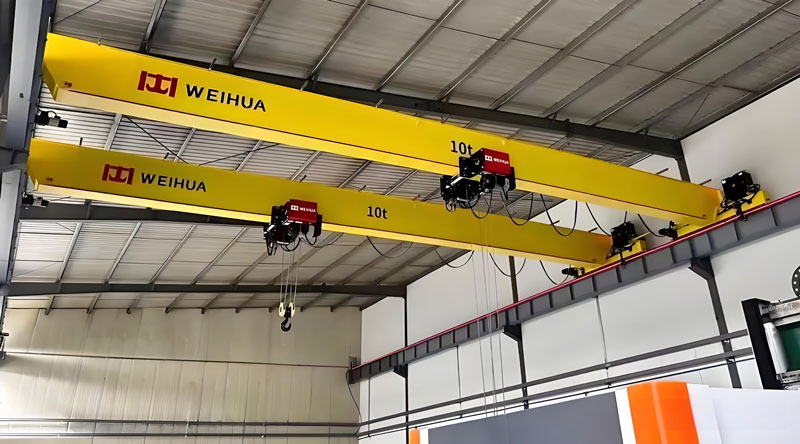
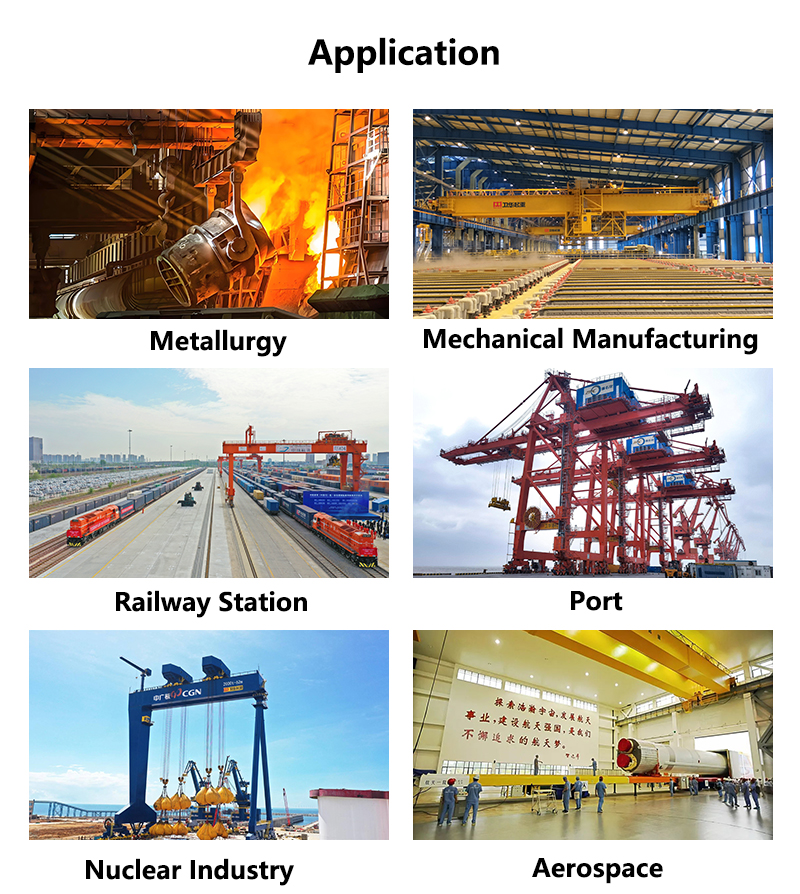
이 핵심을 기억하세요: EOT 크레인의 호이스트 장치는 거의 항상 전기 호이스트! EOT 크레인은 포괄적인 이동 시스템을 제공합니다., 호이스트 자체가 코어 리프팅 기능을 처리하는 동안. 그래서, 실제로는 "호이스트 대 크레인"이 아닙니다.,"보다는 오히려 "간단한 지지대에 있는 독립형 호이스트 대. 복잡한 머리 위 이동 시스템에 통합된 호이스트입니다.”
자신이 보편적으로 우월하다는 생각의 함정에 빠지지 마세요. 최선의 선택은 전적으로 귀하의 운영 요구 사항에 달려 있습니다.:
리프팅 작업을 주의 깊게 분석하세요, 적용 범위, 예산, 건물 구조, 및 작업 흐름. 독립형 리프팅 장치의 근본적인 차이점 이해 (전기 호이스트) 완벽한 오버헤드 처리 시스템 (EOT 크레인) 귀하의 생산성과 안전을 위한 최적의 투자를 위한 첫 번째 단계입니다.. 현명하게 선택하세요!
우리는 귀하의 의견을 소중히 여깁니다! 귀하의 특정 요구에 맞게 서비스를 조정할 수 있도록 아래 양식을 작성하십시오..
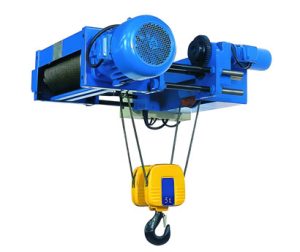
헤비 듀티 전기 호이스트 주요 특징 ✅ 높은 리프팅 용량:Weihua 중장비 전기…
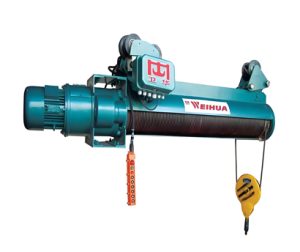
원격 제어 기술 매개 변수가있는 전기 호이스트 매개 변수 일반적인 특이 적 특이 적 ……
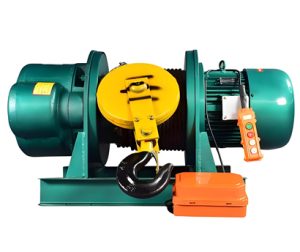
야금 주요 기능을위한 전기 호이스트 1. 고온 저항:장착 된 재치 ……
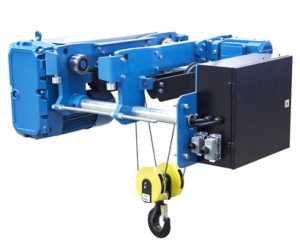
브리지 전기 호이스트 제품 기능 1. 강력한 구조: 고강도로 지어진 ……
